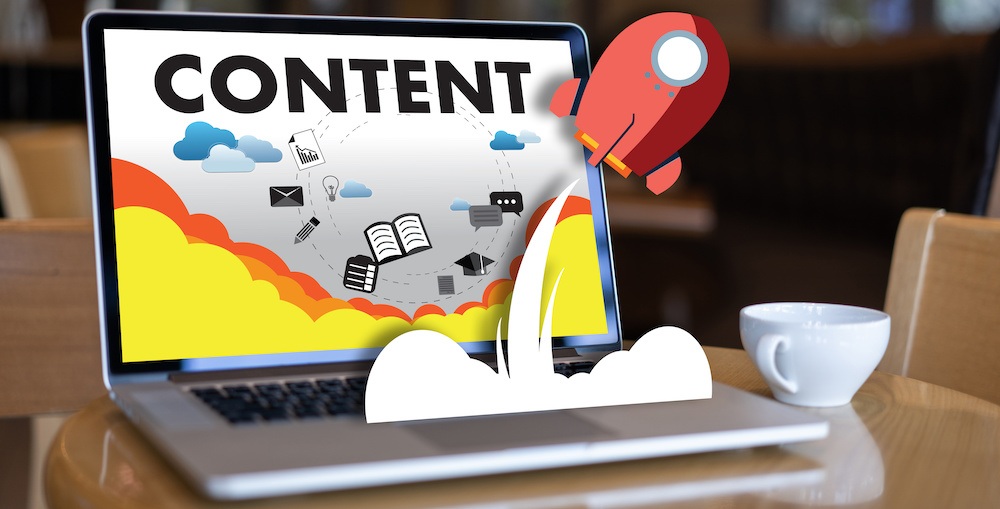
2020 is upon us — a new year and a new decade! When I reflect on the past decade of changes from a content marketing perspective, I am taken aback by how much things changed.
The Changing Social Media World
I recall at the beginning of the decade that this little blue birdie on a website called Twitter started taking over our lives. Hashtags, 140 characters, and constant status updates were all the rage.
Businesses started to see the opportunity to promote their content on social media and reach a massive audience of engaged customers. Then, Twitter started to fade in popularity by the end of the decade.
Now, the real opportunity is a paid and organic social content on Facebook and LinkedIn. Facebook and LinkedIn ads are separate beasts unto themselves, but creating the right mix of regularly-scheduled social posts and paid search ads on each platform has become a major focal point for our agency.
Blog Content — What’s the Right Approach to Maximize Reach?
Then, there’s blog content. At the beginning of the decade, Google News was the be-all, end-all. It was your lifeblood as a content creator to (a) get listed on Google News as an authoritative website and (b) get your articles indexed for consumption by readers.
In a previous life as a reporter, I recall one event in particular that shook my thinking. One day, I posted 25 news articles. Suddenly, the website that I wrote for was pulled from Google News. My heart sank — as did our website traffic. Why were we pulled? Google thought we were spamming the Internet with too many articles. My response, “It was a crazy, busy news day!”
Now, in my current life as a content creator and content manager for our marketing agency, I see how Google has turned up the volume on the authority part of the equation when determining what content is indexed and where it’s ranked in Google Search.
Google is not a fan of brief blogs written in rapid-fire fashion, which is what the conventional thinking was for a while during the 2010s trying to serve readers with short attention spans.
Instead, Google is now prioritizing content that is lengthy, includes numerous internal and external reference links, includes lists of digestible content, is broken up by headings, and is optimized for SEO.
There also needs to be a strategy supporting the delivery of blog content. When we come up with content for our clients, the strategy helps us see what topics to cover, what keywords to target with the content, what audience to reach with the content, when to publish each blog, and how to optimize the content for SEO.
Ultimately, from my perspective, the biggest change from the beginning to the end of the decade was the advancement of content delivery from the Wild West of rapid-fire content production trying to reach Page 1 of Google Search to a more methodical, organized, tactical, and deliberate approach that is supported by authority and credibility.
Is Email Still King of Your World?
Guess what? Email is still king at the end of the decade. It’s sometimes hard to wrap our heads around the importance of email because we think of our own inbox-managing habits. But, the most customer engagement still comes from email.
In fact, Mailchimp recently released an interesting statistic that the average open rate for all industries analyzed is 21.33 percent. That’s one out of every five people that receives an email will open it.
Now, that’s an average of all industries. Actual results vary by industry. And, several other factors affect whether your audience takes action once they open the email…
- The quality of your list
- The content in the email
- The subject and preheader text
- The quality of images used
- The length of the email
- Whether the email is optimized to avoid spam filters
- What time you send the email
There are so many more factors involved in sending an email to your customer base than at the beginning of the decade. Back then, the focus was building a subscription list, sending out emails, and then sending out even more emails.
Just like blog content, the key for today’s approach to email marketing is taking an organized and strategic approach:
- Clean up your list
- Create useful content for your target audience
- Use smart subjects and preheaders to stand out in inboxes
- Incorporate visual-appealing header images and graphics
- Deliver an email of appropriate length that doesn’t require scrolling forever
- Optimizing the email in Mailchimp to reach inboxes, not the spam folder
- And, deliver the content according to the optimal time
We take a very deliberate approach to sending emails for our clients to ensure maximum reach and engagement with your target audience. This is how email remains king!
Finally, the Shift from Desktop to Mobile
Then, there’s the big shift in content marketing that happened during this decade: optimizing for mobile. I love talking about this because there were three stages of shifts in the 2010s decade:
- Shift #1: Oh goodness, the technology really has improved to be able to use your phone like a desktop computer!
- Shift #2: Now people are using mobile more than desktop to view content.
- Shift #3: Actually, the entire pie has grown — mobile is exploding and desktop is still growing.
In 2013, mobile traffic accounted for just 16.2 percent of all worldwide traffic. By 2018, mobile was up to 52.2 percent. [View this Graph on the Progression]
When mobile officially surpassed desktop as the number one source of website traffic earlier this decade, the initial thinking was that desktop was shrinking. In other words, the pie was the same size and that mobile was taking more of the pie. Therefore, logically, desktop had to be shrinking if mobile was increasing.
In actuality, the pie was growing — desktop wasn’t going away; it’s just that mobile was growing so fast that it caused the entire pie to grow.
What does this mean for your content? We want to take a mobile-first approach to content delivery, but we still want to focus on the desktop experience for your target audience.
Content such as social media, blogs, and email should look amazing on email. We should be thinking about how a potential customer will be reading the content on their phone. But, we are also keeping in mind that your audience might read the same content when they’re back at their desktop computer — reading it more closely and taking more time to digest information compared to a quick read on their smartphone.
To highlight the point, here’s a recent stat from this research report published BroadbandSearch.net:
- 55.9 percent of time spent on websites come from desktop
- 40.1 percent of time spent comes from mobile
At the end of the decade, a greater percentage of traffic is coming from mobile, but more time is being spent on desktop consuming content.
It’s an amazingly delicate balance between the mobile and desktop experience. That’s why we’re glad to have tools for social media, blogs, and emails to see what the viewing experience looks like for both to make sure they are optimized for two different habits.
Work with Marketing Refresh for Content Marketing in 2020!
Advances in technology will surely lead to more changes to content marketing in 2020 and beyond. We’re keeping track of those changes and ready to optimize your content to reach more of your target audience.
Work with our marketing agency to help your business succeed in today’s ever-changing digital environment. As a content marketer, I will make sure your content is optimized to reach the right people through social media, blogs, and email. Contact us today to find out how we can help your business grow!


